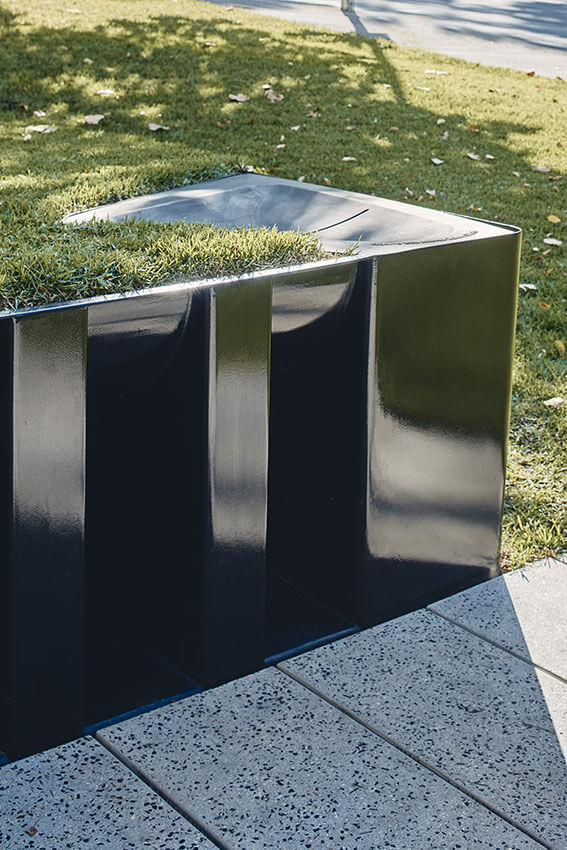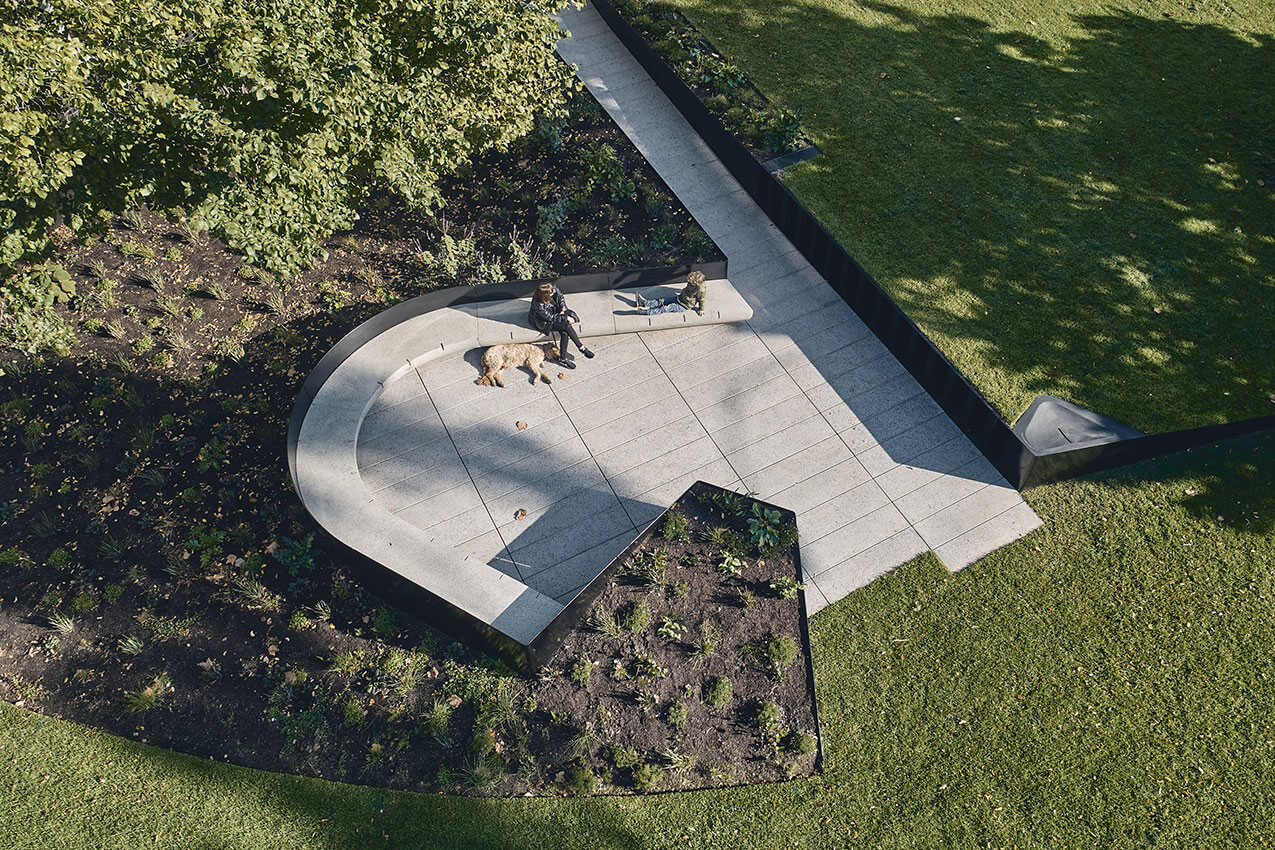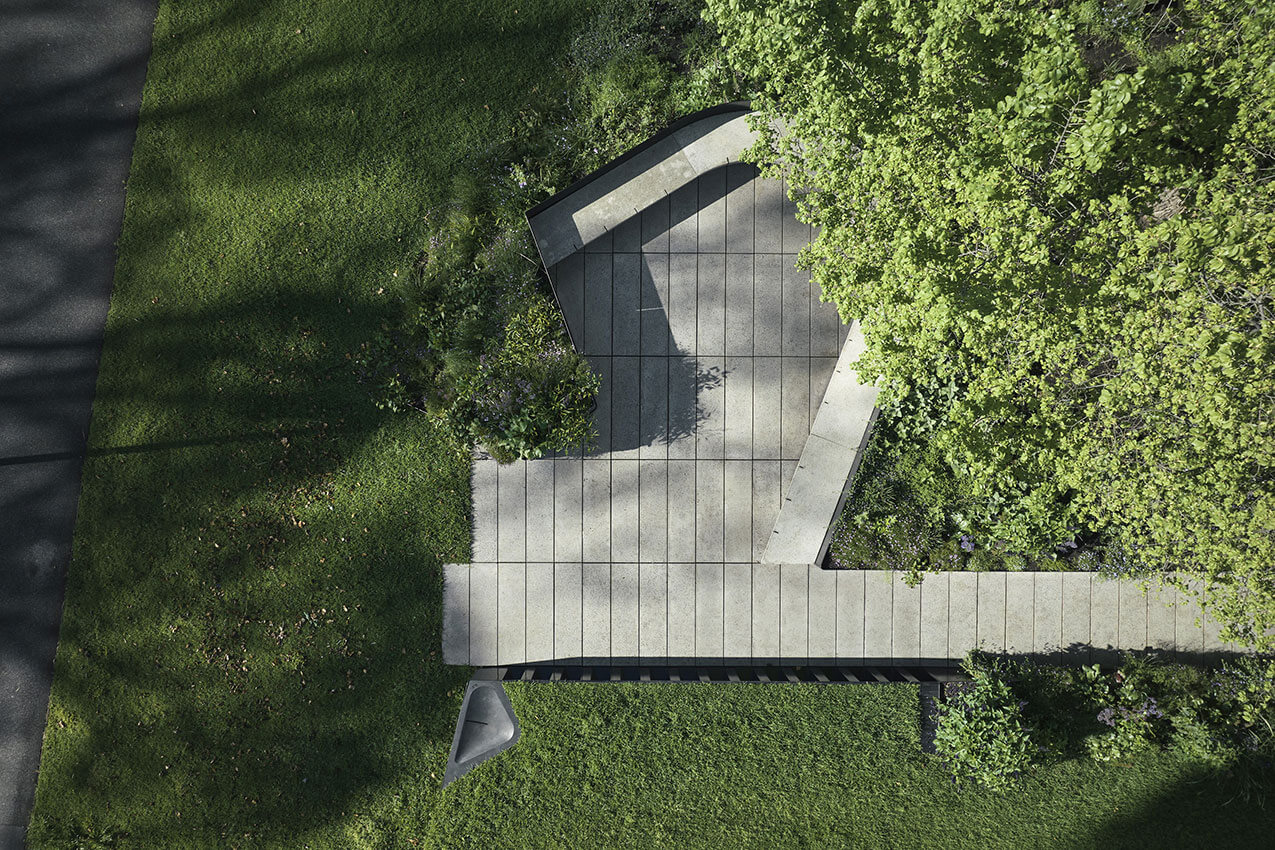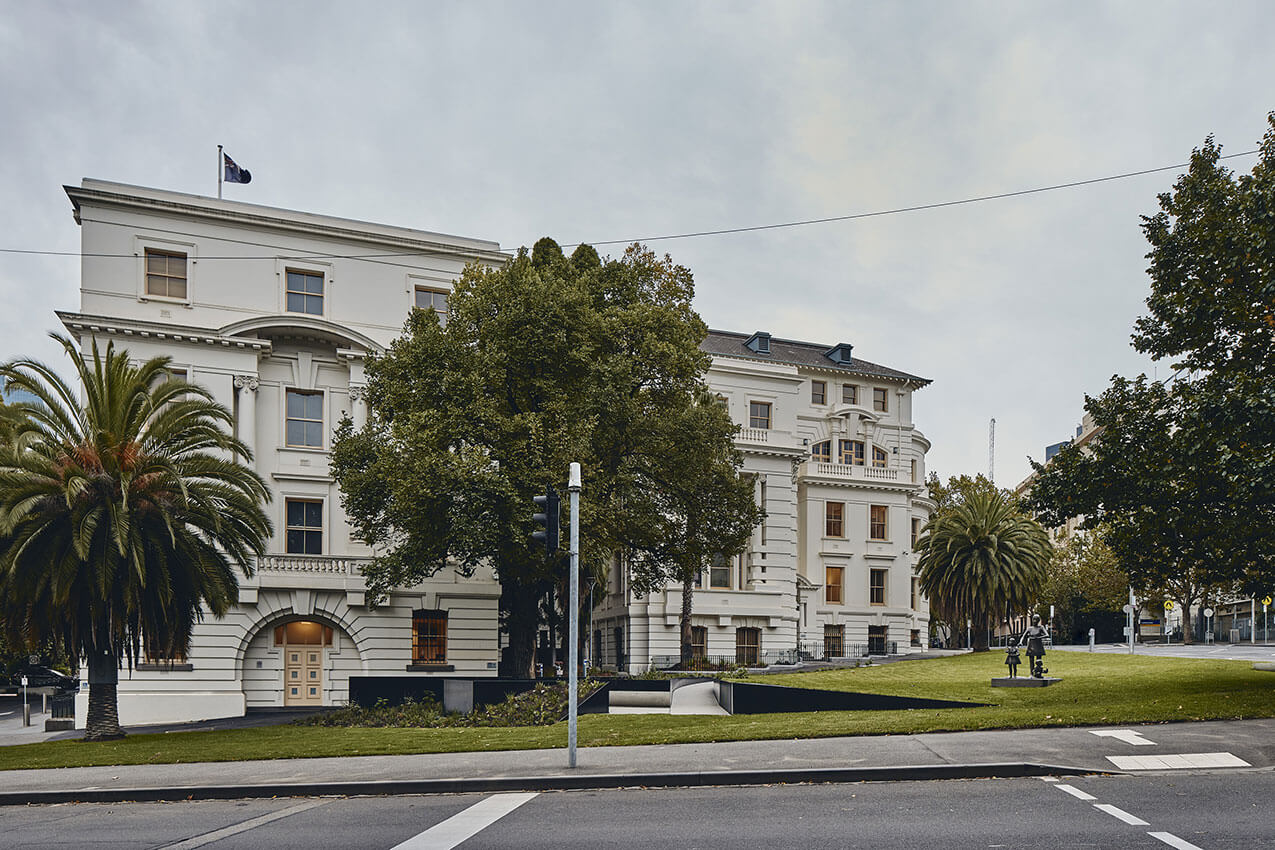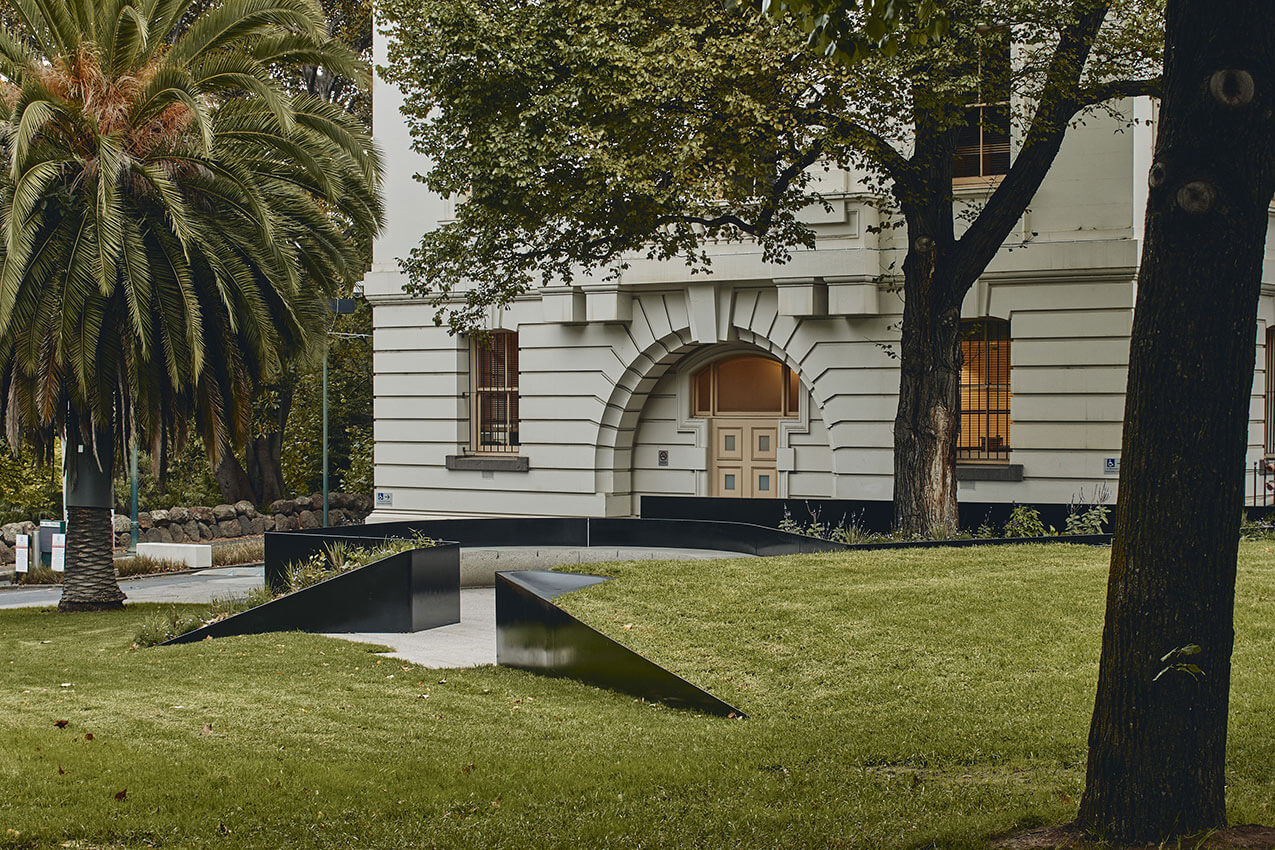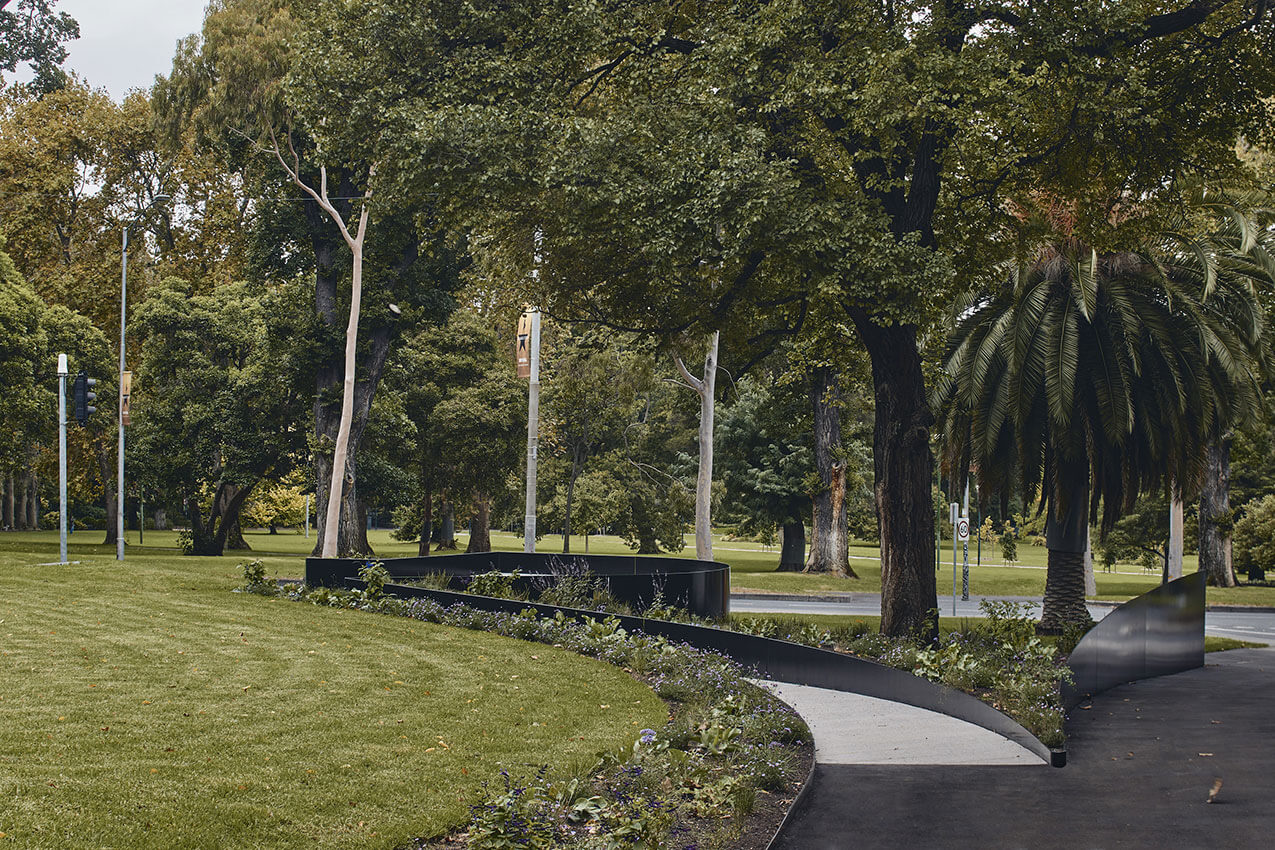Victorian Family Violence Memorial | MUIR+OPENWORK
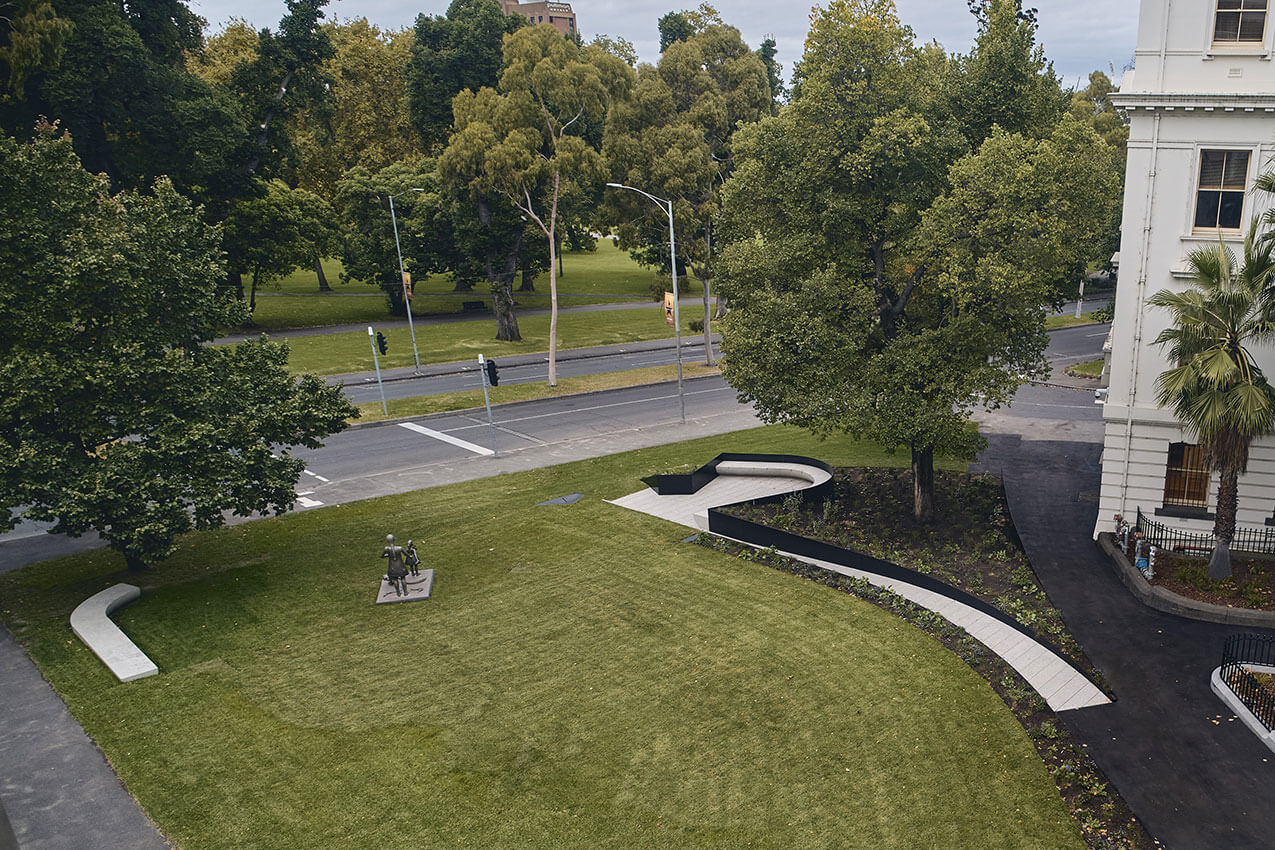
2023 National Architecture Awards Program
Victorian Family Violence Memorial | MUIR+OPENWORK
Traditional Land Owners
Wurundjeri
Year
Chapter
Victorian
Category
Small Project Architecture
The Dimity Reed Melbourne Prize (VIC)
Builder
Photographer
Media summary
The memorial changes the way people behave in the site rather than changing the site itself. The sweeping arc folds into the land providing spaces of procession, congregation, reflection. A wall of thin black steel holds the memorial. Fragility and strength. A room whose edge is defined by seating, sits below the elm tree, cocooned by purple planting, a signifier of the cause. The existing land is folded, defining an elevated platform for congregation and a view beyond to Fitzroy Gardens. A hip height datum is struck, responding to safety, comfort, and visibility.
This memorial is an acknowledgment of the immeasurable. No names but individual memories. The memorial wall holds the land. Retaining. Supporting. The smoking-vessel is nurtured by the structure below. Inscribed with the words, ‘Lore of the land keeps People safe’, the vessel will facilitate Indigenous cultural practices and reminds visitors of their responsibility to look after Country.
2023 National Awards Received
2023
Victorian Architecture Awards Accolades
Shortlist – The Dimity Reed Melbourne Prize (Vic)
The Kevin Borland Award for Small Project Architecture (Vic)
Victorian Jury Citation
The Victorian Family Violence Memorial presents a new place for reflection on the city’s edge. Intrinsic to the project’s success is the exemplary consultation process through which the project was developed. Through a continued and open dialogue with victim survivors, First Nations and state government advisory groups, Muir+Openwork have reframed the memorial typology. This is a place for everyone, a place where people can bring their own meaning and their own interpretations.
Situated on a triangulated site, bound by a busy street and the austere presence of the Commonwealth Building, the memorial successfully grounds itself within a layered context. Defining its physical relationships through scale and orientation, the memorial creates a dialogue with the surrounding topography to form a protected space for contemplation.
The procession is articulated along a sinuous black steel wall that offers moments for pause before culminating at an inscribed smoking vessel. Showing considered restraint in both scale and approach, the hip-height wall results in a feeling of being protected, but not hidden.
Understated, nuanced and subtle, the memorial navigates its difficult physical and cultural context to establish a sense of quiet defiance. A place that is open yet specific, subtle yet powerful, soft yet permanent.
City of Melbourne led the delivery of the Family Violence Memorial for the State Government, with the design developed in close partnership with victims and survivors representatives and Traditional Owners.
In embedding itself within the landform of this small civic reserve, the memorial has added new dimensions to support a diversity of community use and experiences.
There is both a subtlety and strength to this landscape memorial that creates a place of pause and intimacy while allowing people to feel connected to the broader parklands beyond.
It delivers multiple strategic outcomes by adding ecological diversity and being inclusive for all.
Client perspective
Project Practice Team
Alessandro Castiglioni
Amy Muir
Liz Herbert
Marijke Davey
Mark Jacques
Toby McElwaine
Project Consultant and Construction Team
Forced Adoption Practices and Artist Anne Ross, ‘Taken Not Given’ Memorial stakeholder
Michael Tenburren (TenBurren Irrigation), Irrigation Consultant
Phil Gardiner (WSP), Structural Engineer
Sarah Lynn Rees, Indigenous Advisor
Victims Survivors’ Advisory Council, Lived experience stakeholder
Wurundjeri Woi-wurrung Cultural Heritage Aboriginal Corporation, Boon Wurrung Foundation, Bunurong Land Council Aboriginal Corporation, Traditional Custodians and cultural advisors
City of Melbourne
The Department of Premier and Cabinet, Office for Women
Connect with MUIR+OPENWORK
